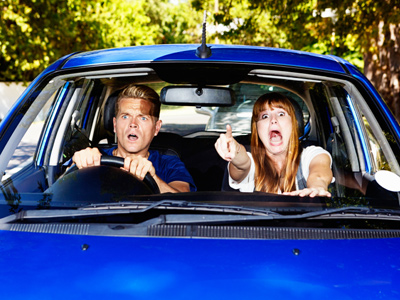
Forces - Forces and Braking
This GCSE Physics quiz looks at forces and braking. Understanding braking forces is an important part of being able to drive. Knowing approximately how far it will take you to stop is not just important for yourself, but also for the safety of other road users.
Before we consider the braking force acting on a vehicle, it is necessary to understand what forces are acting on a vehicle. The driving force comes from the engine and this moves it forward. The weight is created by the force of gravity acting on the mass of the vehicle, holding it to the ground. Acting in the opposite direction to the weight is the reaction force. There are two forces acting in opposition to the driving force, the friction with the road and the air resistance. The air resistance is much greater than the friction with the road when a vehicle is in motion.
You have the initial speed of the car before braking, the final speed after braking (must be 0 m/s since it has stopped) and the time it took to stop the car. You can therefore use the equation s = ½ (v+u) × t to calculate the stopping distance. This is then added to the distance travelled during the thinking time to come up with the answer. You could also use s = ut + ½ at2 but you would then need to take the additional step of calculating the acceleration.
Make sure that you learn the equations of motion linking initial velocity (u), final velocity (v), acceleration (a), displacement (s) and time (t).
Ready for more?
not all...
quizzers. Try to win a coveted spot on our Hall of Fame Page.







